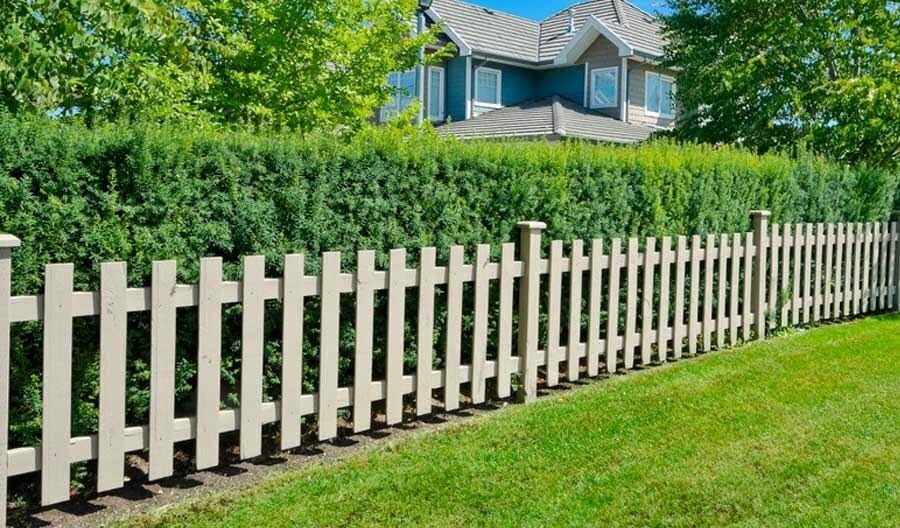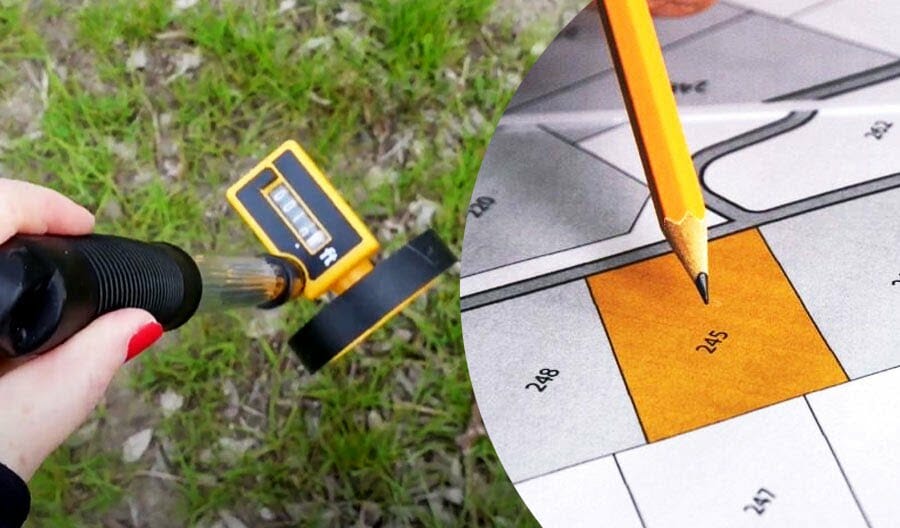Who bears the responsibility for upkeep and repair of boundary fences typically located on private properties, particularly in some urban regions of South Dakota? Moreover, who holds ownership or entitlements to these fences?
South Dakota has over a century-old fence law touching on the construction, ownership, and use of partition fences. Landowners in the state are liable for the expense of constructing and maintaining a boundary fence according to South Dakota codified laws sections 43-23-1 through to 43.23-6 of 1877.
Should landowners disagree on the specifications of the shared fence, the laws also define legal partition fences. Landowners are also given the right under the law to demand damages from neighbors who neglect their section of a partition fence.

What we cover
ToggleDo I Need A Permit To Build A Fence In South Dakota?
Yes, you may be required to apply for a permit before you build a fence in South Dakota. This depends on local county, town, or city building regulations or ordinances.
For instance, property owners in Sioux Falls, SD need a permit to construct, relocate or replace a fence.
Some of the major cities and counties in the Mount Rushmore State that require their residents to apply for a fence-building permit include:
- Sioux Falls- Fence permit required across the city of Sioux Falls- The reason for the permit is to ensure that compliance with city fence regulations regarding the height and location of fences.
- Rapid city- Permits are required for all structural developments in Rapid City, SD.
- Pierre city- Building permits are required for construction projects like fences in the city
Tip: Refer to local building regulations if unsure about fence permit requirements in your area. You may be liable for fines or punitive action If you erect a fence without applying for a permit where it is required.
Can I Replace an Existing Fence Without A Permit?
No, you cannot replace an existing fence without applying for a new permit if local laws require you to apply for a permit. By replacing the fence, you might be altering its structure, positioning, and other important things that are usually included in fence regulations.
Ask your preferred fence contractor in case you are in doubt about permit requirements in your area. Most of them will be willing to assist you with the application or may even do it on your behalf where it is allowed.
How Tall Can A Privacy Fence Be In South Dakota?
Local fence ordinances at the city, county, or town level contain clauses on fence height limitations in South Dakota. There is no statewide law or requirement on fence heights in South Dakota. As such, individual building departments or planning authorities in the state usually draft these building codes for their residents.
For instance, fence heights in Sioux, SD, are restricted to 4 Feet on front yards and 6 Feet on the rear yard for residential areas. See below, some fence height limitations from some of the major cities and towns in South Dakota.
| City/ Town in South Dakota | Maximum Fence Height- Residential areas |
|---|---|
| Sioux city | 4 Feet in front yards and 6 Feet in rear yards |
| City of Pierre | 4 Feet in Front and Rear yards |
| Rapid City | 4 Feet in front yards 6 Feet in other areas |
| Aberdeen city | 4 Feet on the Front yard and 6 Feet on the side and rear yards. 3 Feet for fences facing the intersection of Alley Row. |
| Brookings, SD | 2.5 Feet in front yards for interior lots or corner lots |
Additional restrictions may exist depending on the zoning district you are in, especially for urban areas. Those living in gated communities or historical areas may be subject to special fence rules that take precedence over city or county ordinances.
Who Owns the Fence on Property Lines In SD?
Landowners are responsible for erecting one-half of a property line fence and therefore own that section according to South Dakota codified fence laws. Neighbors on adjoining lots can also have an alternative agreement where they can share ownership of the entire fence or any other agreement that they deem fit.
Note: It is important to note here that fence laws in South Dakota are aimed more towards rural landowners who use their land for agricultural purposes such as animal rearing. Landowners in urban areas in South Dakota are advised to enter into legally binding property line agreements that include clauses on boundary fences.
How Do You Know Where the Property Boundary Is?
The first place you should look when you want to identify your property’s boundaries is on the ground through a normal visual inspection or professional survey. Look for permanent markers on unenclosed lots indicating where the property line passes.
You can also check the deed or title of your land for a drawing showing where the property line is. However, it can be difficult to interpret what is contained in a survey drawing or plat map without a surveyor.
The third and most reliable way to identify the property boundary is to survey your land. Licensed surveyors in the state of South Dakota can help you measure and pinpoint where the boundary line is and produce documentation for the same.

Can My Neighbor Build A Fence On The Property Line?
Your neighbor is responsible for building half of the boundary fence and maintaining it according to South Dakota’s fence laws. You can, however, get into a binding property line agreement with them and share the expenses of erecting a boundary fence.
In cases where you cannot agree on who uses the fence, it is advisable to erect your fences away from the property leaving a space between your lots. This way, you will both be responsible for your fence instead of sharing maintenance costs.
Can I Put Up A Fence on My Side of The Property Line?
You are also allowed under South Dakota fence law to erect half of your portion of a boundary fence. You can also agree with your neighbor to build a common boundary fence or opt to erect the fence away from the property line on your lot.
What Is A Spite Fence?
A spite fence is a fence erected purely for malicious purposes and is of little to no benefit to the owner in its current form. The fence could be unnecessarily tall, and have dangerous components such as sharp razor wire or poisonous thorns.
Spite fences in South Dakota can be enjoined by the authorities or court of law if they are found to have no real benefit or pleasure to the owner. Avoid erecting spite fences to maintain good relationships with neighboring landowners.
Is South Dakota A Fence in Or Fence Out State?
A fence-out state is one where farm animals are free to roam unrestricted and fences are only erected in strategic areas for a special purpose. This is common in states with large tracts of land and large farms with thousands of animals such as Texas and Wyoming.
Large parts of South Dakota use the fence-out approach to livestock farming based on local agricultural laws. This means animals are free to roam freely across the land and farmers wanting to keep them out can erect a fence around their property.
This approach to fencing is also commonly referred to as “open range” in some areas. Fence-in states, on the other hand, require farmers to enclose their animals with a fence to prevent them from wandering into other farms.
South Dakota Boundary Fence Laws at A Glance
| Statutes and Case Law | Boundary Fences | Spite Fences |
|---|---|---|
| Boundary Fences: South Dakota codified laws sections 43-23-1, 43-23-2, 43-23-3, 43-23-4, 43-23-5 and 43-23-6 Spite Fences: Racich v. Mastrovich, 273 N.W. 663 (S.D. 1937) | Unless adjoining landowners otherwise agree, all landowners are liable for one-half of the expense of erecting and maintaining a partition fence between adjoining lands; Each landowner must build half of the fence that is on the right-hand side when they stand on their own land, facing the property line; Any fence that is agreed to by adjoining landowners is considered a “legal fence”; When landowners don’t agree to the specifications of a fence, the South Dakota legislature defines a “legal partition fence”; If a landowner neglects to erect or maintain a partition fence, the neighboring landowner can issue a 30-day demand and recover damages if the landowner fails to comply. | Building of a spite fence can be enjoined only if it provides no “benefit or pleasure” to the builder, and instead is built “solely with the malicious motive of injuring the plaintiff by shutting out his light, air, or view”. |
FAQ's
Who Owns the Fence Between Neighbors?
Both landowners sharing a property boundary own the boundary fence they erect and are liable for its maintenance costs in the long term according to South Dakota boundary fence laws. However, fences built away from the property line belong to individual landowners.
What If A New Fence Is Blocking My View?
Fences deemed to be of no benefit to a landowner can be deemed as a nuisance or spite fences. At the same time, local building codes disallow the building of tall opaque fences in some areas. Talk to the owner of the fence or seek legal advice if a dispute arises from a new fence.
Can I Build A Fence Next to My Neighbor’s Fence?
Yes, you are allowed to build a fence on your property provided it complies with local building laws. Building a fence on your land is one way to avoid sharing a fence with other landowners and having control over its usage.
Can You Put Up A Fence Without A Survey?
You can put up a fence without a survey provided you have a proper measurement of your land and have identified the correct property lines.
Do Neighbors Have to Share the Cost of a Fence?
Neighbors are obliged by law to share the cost of building a fence under South Dakota boundary fence laws. Each neighbor is responsible for erecting half of the fence in one direction. However, neighbors who do not keep livestock or benefit from the boundary fence for five years are not liable for such expenses.












